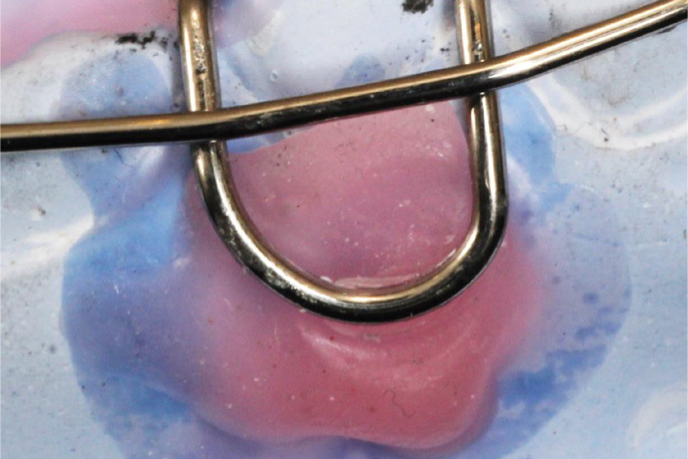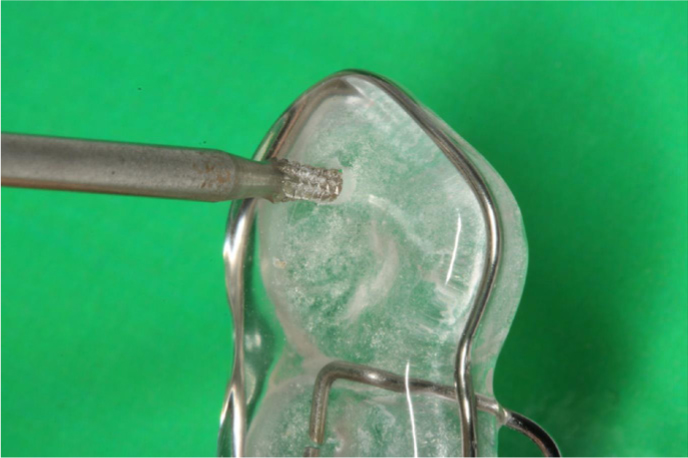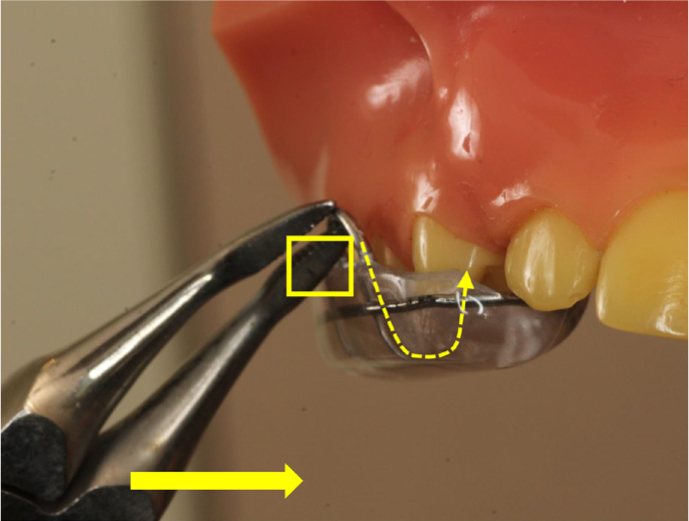Article
Rapid maxillary expansion (RME) provides a means of expanding the upper arch by separation at the midline palatal suture. One approach to this expansion is to use a bonded acrylic variant. As the name implies, this adheres to the teeth by means of a glass ionomer or resin cement. The abundant tooth surface area under the acrylic pads, in addition to the potential for cement to flow into any undercuts, results in the bonded expander being very well retained. This is beneficial until it comes time to remove the appliance, when the tenacity of the bond may be a source of potential discomfort for the patient and frustration for the clinician.
Removal of bonded acrylic expanders can be greatly facilitated through the incorporation of specially designed debonding loops developed by David Sarver. The method is as follows.
Incorporating debonding loops into an RME
One loop, made of 0.036-inch stainless steel wire, is placed on each side. Each loop crosses the occlusal surfaces at the embrasure and touches the occlusal surface of the teeth in the mesial and distal fossae of the second premolar (Figure 1). During construction, each loop should be secured with wax to contact the model in the fossae but with 1-mm clearance elsewhere. The clearance allows acrylic to flow under the wire and aids the loop's incorporation into the appliance. Blocking out 1 mm buccally creates space for the beaks of Weingart pliers to grasp the loop when it is time to remove the appliance (Figure 2).


A 0.030 wire framework is bent to support the acrylic pad and serve as a fulcrum point for the debonding loop (Figure 1). The wire framework travels through the mesial embrasure of the canine and distal to the first molar. It should contact the debonding loop on the loop's buccal surface.
Relief holes
Relief holes should be drilled at the palatal cusp tips of the maxillary molars and premolars, or deciduous molars in younger patients (Figure 3). These allow extrusion of excess cement and prevent material entering undercuts, making removal needlessly challenging. They also provide a reference point for intra-oral measurement to accurately monitor the expansion achieved.

RME removal
Weingart pliers are clamped onto the loop with the base of the beaks in a fulcrum position against the acrylic pad. With a firm movement, the plier is rotated, pulling the debonding loop buccally. Thus, a second fulcrum is created at the point where the debonding loop contacts the acrylic pad's wire framework and a vertical force is transmitted to the mesial and distal fossae of the maxillary teeth upon which the debonding loop rests (Figure 4). This process is undertaken on the debonding loop on both sides. Consequently, the appliance is lifted off the teeth because the part of the debonding loop resting on the occlusal surface pushes the appliance off the dentition, and the bond is effectively broken. Any residual material is then easily removed.

